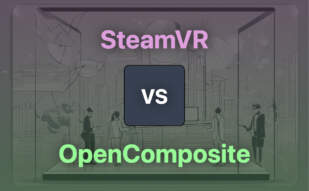OpenVR is a software development kit (SDK) and API developed by Valve, serving as the interface between VR hardware and software. It was released publicly on April 30, 2015, and supports SteamVR and various virtual reality headset devices. Alternatives to OpenVR include SteamVR, OpenXR, OpenComposite, Oculus VR, Windows Mixed Reality, Oculus Runtime, Unity XR, MRTK, CloudXR, Virtual Desktop, WMR, Quest 2, Vulkan, and Unity.

SteamVR

Steam up your virtual reality experiences with SteamVR, an operational wizard that lives within your Steam client. It’s simply so excited about VR that it installs itself automatically when your VR headset snuggles into your PC.
SteamVR Top Features
- Room setup: Defining play area is as simple as drawing your boundaries. Warning: Actual walls not included!
- Device management: The Oil can to your Tin Man, keeping your firmware updated, paired, and your audio settings in symphony.
- SteamVR Home: Your VR launch pad, this is the cradle that holds your virtual adventures together. Also a social hub to connect with friends.
- SteamVR Collectibles: 3D badges of honour given for gaming tenacity.
- Overlay applications: Additional functionalities are just an overlay away!
| 360-degree VR experience: | Don’t just look around, be all-around! |
| Hardware Compatibility: | Plays well with its own HMDs (like Vive) as well as others (like Oculus Rift). |
| 3D environment creation: | The artist in you can shine with software that supports crafting of 3D realms. |
SteamVR Limitations
While a strong performer, SteamVR isn’t without quirks. For instance,
- In the Summer of 2022, Meta Quest 3 users reported compatibility concerns with SteamVR while using Air Link.
- SteamVR is rather picky with its environment. It requires certain system specifications for optimal performance. Your PC should be packed with OS as Windows 7 SP1, Windows 8.1, or later, Windows 10; Processor as Intel Core i5-4590/AMD FX 8350 equivalent or better, and Graphics as NVIDIA GeForce GTX 970, AMD Radeon R9 290 equivalent or better.
SteamVR Use Cases
Use case 1: Gaming
From the comfort of your own home, SteamVR transforms your living room into a portal to other worlds. From tracking your playtime to rewarding virtual collectibles, gaming is an immersive affair with SteamVR.
Use case 2: Corporate Settings
For those in more formal settings, SteamVR has the capability to go standalone, allowing for engaging corporate presentations and training environments.
Use case 3: Social Meetups
Why hang out in a chat room, when you can inhabit a VR environment together? SteamVR Home lets you connect with friends in a multitude of different landscapes, setting a new standard for social interaction.
OpenXR
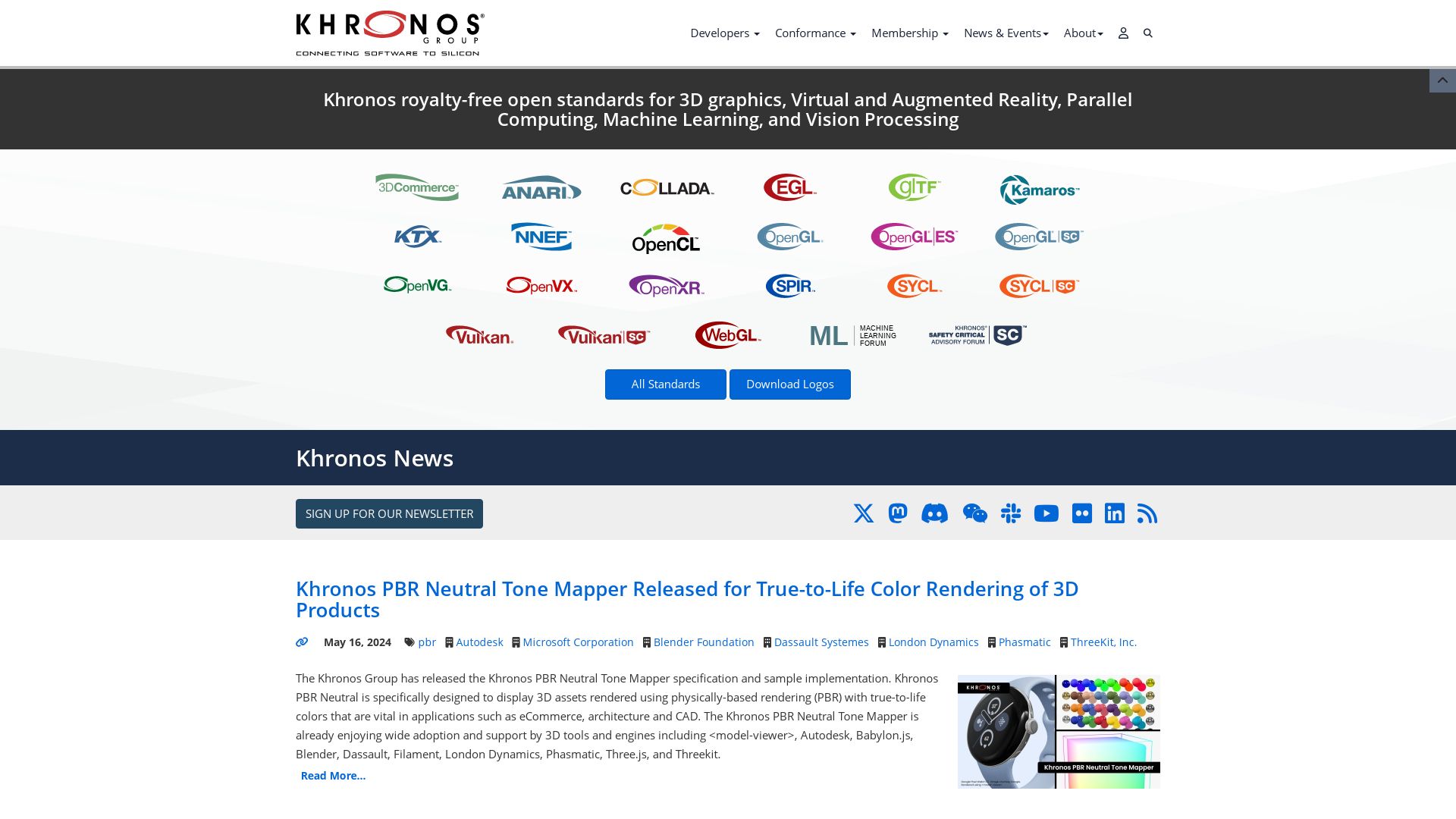
In the realm of AR and VR technology, OpenXR stands out for its streamlined, high-performance access to AR/VR possibilities. Conceived by the Khronos Group, it is an open standard, enabling more immersive and interactive experiences for developers and end-users alike.
OpenXR Top Features
- Unifies AR/VR software development by reducing the need for porting or re-writing code, thereby broadening hardware reach.
- API provides developers with key elements such as XrSpace and XrInstance to ensure compatibility with diverse devices in the VR/AR sphere.
- Contributes to a powerful performance boost and minimum latency for users.
- Provides a seamless integration with multiple platforms and devices, supported by tech giants like Microsoft, Google, and Unity Technologies.
- Use of extension mechanism allows developers to go beyond core features.
- Committed to continuous updates and extension of capabilities.
| VR Creation Benefit | OpenXR’s Role | |
|---|---|---|
| AR/VR Fragmentation | OpenXR was designed to solve this issue, providing robust and unified AR/VR development experience. | |
| Hand Tracking and Eye Gaze Tracking | OpenXR provides extension support for these technologies, enabling more immersive experiences. | |
| Ease of Use for Developers | OpenXR lowers the barrier for developers to harness innovative graphic technologies and eye tracking, allowing a more creative focus. |
OpenXR Limitations
- OpenXR is not an engine itself, making it more applicable for developers or those familiar with scripting and coding.
- Dependent on company support for drivers, meaning certain hardware might not be supported.
OpenXR Use Cases
Use case 1: Game Developers Using Unity or Unreal Engines
OpenXR’s distinctiveness shines when it comes to game developers using Unity or Unreal Engines, as it allows for portable code which is cross-platform friendly and ensures maximum performance.
Use case 2: AR/VR Content Creators
AR/VR content creators find value in the compatibility OpenXR offers across diverse devices, reducing development and maintenance burden, thus enabling a focus on creative vision.
Use case 3: Tech Corporations
Tech corporations like Microsoft and Google find the OpenXR standard beneficial as it provides seamless integration with various platforms and devices and supports next-gen graphic technologies.
Virtual Desktop
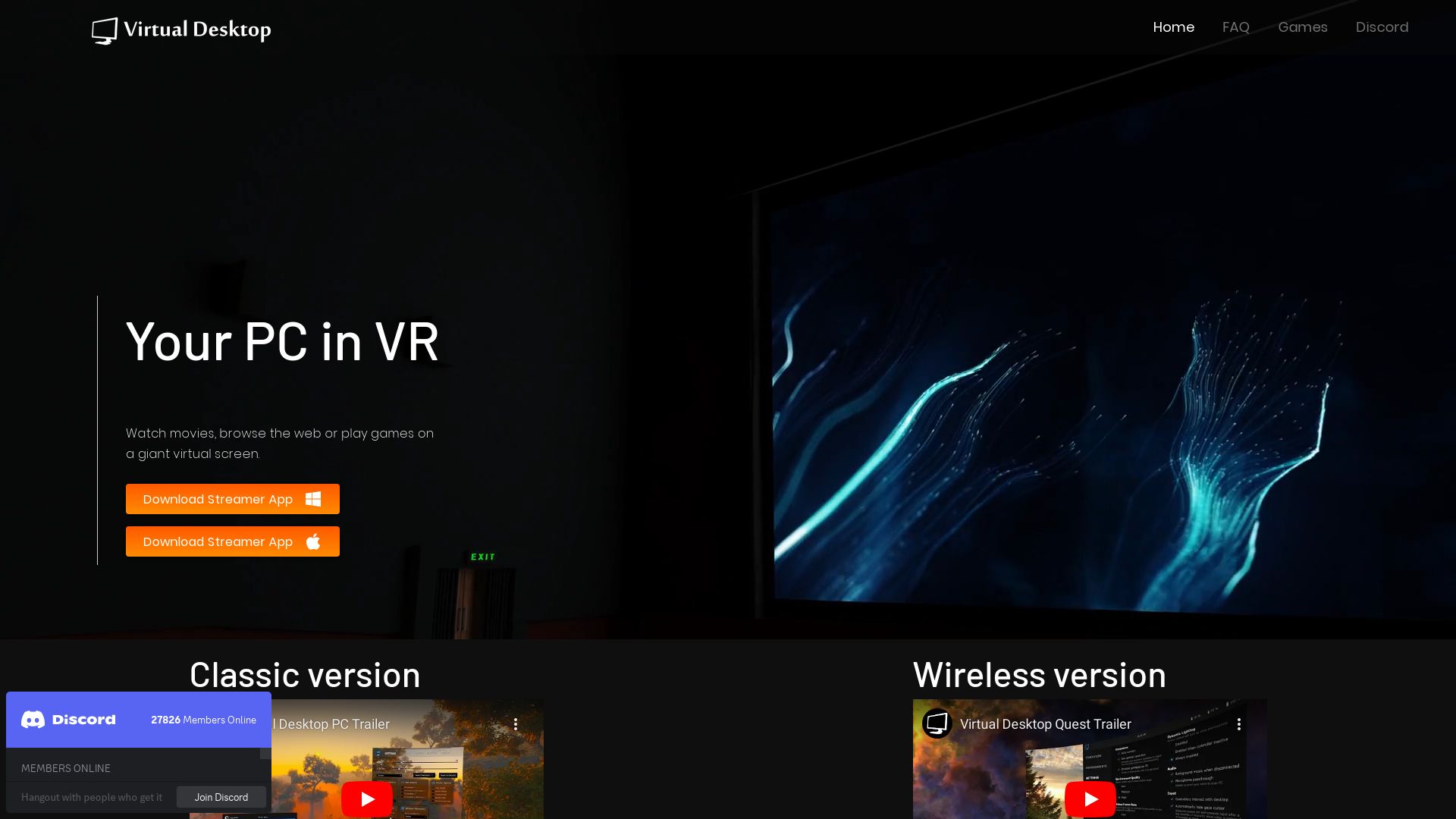
Enter the realm of seamless virtual experiences with Virtual Desktop, a notable alternative to OpenVR. This software transforms your VR-ready PC into a virtual workspace, delivering a truly immersive experience for gaming, working, and multimedia applications.
Top Features of Virtual Desktop
- Effortlessly stream PCVR games and use your computer in VR
- Browse web, watch movies, Netflix or even play games on a giant virtual screen.
- Enjoy optimized latency and high-quality streaming application developed natively for VR environment.
- Operates seamlessly with SteamVR, Oculus Rift, HTC Vive, while catering to keyboard/mouse input, and a seated play style.
- Access desktop applications, like Microsoft Office, media player and photo editing software, and more in a VR setting.
- Offers secure streaming experience with microphone passthrough and gamepad emulation facilities.
- Fosters productivity on the go by providing interactive access to your desktop applications in a virtual environment.
| Other Noteworthy Features | Key Benefits |
|---|---|
| Supports 3D SBS movies and allows browsing and viewing 360 photos and videos | Enhances VR multimedia experience |
| Features remote connections to your computer over the internet | Aids in achieving uninterrupted work and gaming sessions |
| Supports Bluetooth peripherals like keyboards, mice, and gamepads | Facilitates easy navigation and inputs |
Virtual Desktop Limitations
- Mac not supported for gaming functionality.
- May encounter functionality issues with certain VPN and antivirus softwares.
- Compatibility excludes some games and requires precise router/network setup.
- May require additional drivers, updates and monitoring adjustments to rectify issues.
- Requires purchase across platforms with no ‘free-to-play’ option, although refunds are offered through Steam.
Virtual Desktop Pricing
Virtual Desktop operates on a paid model across different platforms such as Oculus Store, Itch.io, or Patreon. Although there’s no free option available, refunds are facilitated through Steam.
Virtual Desktop Use Cases
Use case 1: Gaming
With its superior streaming quality and compatibility with a range of platforms like SteamVR and Oculus Rift, Virtual Desktop forms an excellent choice for gamers seeking an engaging VR experience.
Use case 2: Work From Home Professionals
Whether it’s running Microsoft Office applications or connecting remotely over the internet, Virtual Desktop allows professionals to maintain productivity with ease, all within a virtual environment.
Use case 3: Multimedia Enthusiasts
Enjoy your favorite TV shows, movies, and 360-degree content like never before, as Virtual Desktop provides an unprecedented multimedia experience on a gigantic virtual screen.
WMR
Meet WMR: Microsoft’s Windows Mixed Reality,The innovative blend of VR and AR earning traction since October 2017 with its growing adaptation.
WMR Top Features
- Employs VR screens in HMD.
- Interactivity via handheld controllers or Xbox One gamepad.
- Uses integrated sensors for immersive experience.
- Interoperability with SteamVR, widening content horizon.
- Usage possible with minimal PC specifications.
- Impressive range of handset partners including Acer, Asus, Dell, HP, Lenovo, Samsung.
- Desktop PC operation in a virtual environment, with web browsing through Microsoft Edge. No need for a high-end gaming PC.
| Headset Partner | Unique Features |
|---|---|
| Acer | First to market, flip-up screen, bundling at $296 for a full-featured VR experience. |
| HP | Distinct ‘Tron-like’ headset design, bundled with motion controllers. |
| Samsung | Headset includes superb AKG headphones and utilizes AMOLED display. |
WMR Limitations
- Not suitable for seasoned VR users.
- Currently, no availability on Xbox One and other major consoles.
- Presence of low FOV tracking presents issues for hand-controller coordination.
WMR Pricing
Competitively priced, headset options begin at $299, making VR more accessible for first time users. Packaged deals like Acer’s bundled solution at $296.
WMR Use Cases
VR Gaming
WMR offers an engaging gaming experience through its compatibility with Steam.
Professional Applications
Running desktop PC in a virtual environment, WMR enhances professional efficiency.
First-time VR Users
With competitive pricing and minimal PC specification requirements, WMR is the ideal choice for beginners venturing into VR.
Quest 2
The Quest 2, a VR headset product of the Meta Platforms’ division Reality Labs, entered the market as Oculus Quest 2 before rebranding to Meta Quest 2 in 2022. It represents a major shift in virtual reality, moving away from PC – based VR strategy since its release on October 13, 2020.
Quest 2 Top Features
- Operates standalone with internal OS or with Oculus Rift-compatible VR software running on a desktop computer.
- Embedded with Qualcomm Snapdragon XR2 processor and 6 GB LPDDR4X memory.
- Display features an RGB LCD with 1832 x 1920 per eye and refresh rates varying from 72-120 Hz.
- Updated Oculus Touch controllers with extended battery life, supporting hand tracking.
- Has a Quest Store filled with VR games and experiences.
| Internal Storage Options | Price |
|---|---|
| 64 GB (Discontinued) | $299 |
| 128 GB (Standard) | $299 |
| 256 GB | $399 |
Quest 2 Limitations
- Battery life is between 2-3 hours between charges.
- The original storage offering of 64GB expanded standard 128GB with no option for further expansion.
- Rebranded and moved away from PC-based VR strategy, released on steam a few months after launch causing some initial user anxiety.
Quest 2 Pricing
The Quest 2’s pricing commences at $299 for the 128 GB variant, and $399 for the larger capacity 256 GB variant. The original 64 GB model, previously sold for $299, has been discontinued.
Quest 2 Use Cases
Use case 1: Gaming
With a dedicated Quest Store comprising dozens of VR games, the Quest 2 serves as an immersive platform for gaming enthusiasts.
Use case 2: VR Experiences
Aside from gaming, the Quest 2 is a haven for experiencing virtual reality environments, thanks to its high-resolution display and intuitive controllers.
Use case 3: Development
As an Android-based VR system, developers have an accessible platform to create and test new VR experiences and apps.
Vulkan
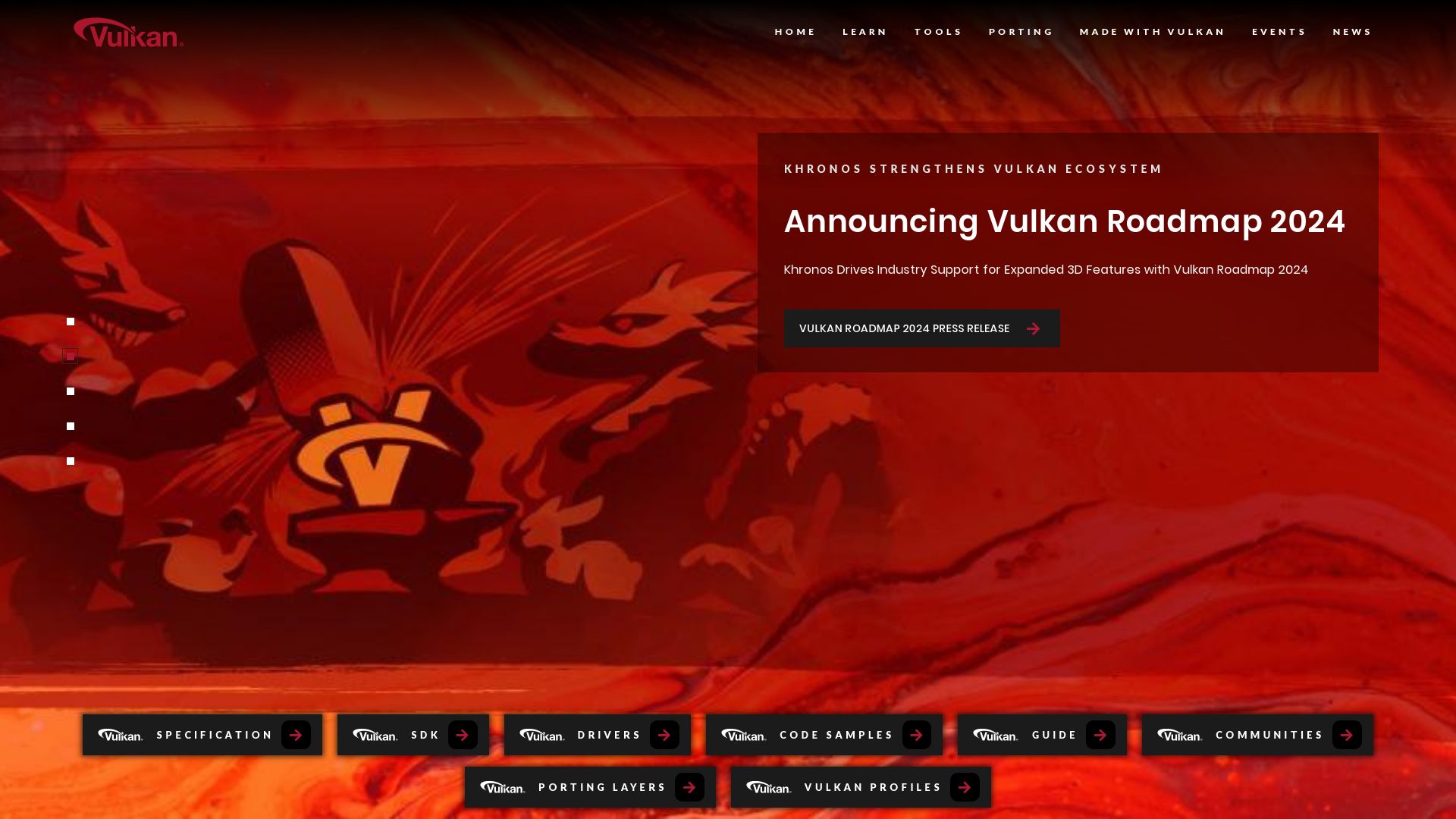
In the grand stage of VR Creation Tools, Vulkan majestically stands as a cross-platform industry standard graphics API. This toolkit, revered for its vast potentials, targets a diverse range of devices and plays a pivotal part in an unprecedented technological revolution.
Top Features of Vulkan
- A shining beacon of continuous evolution, Vulkan frequently extends its capabilities and improvements.
- Offers a refined control over scheduling, synchronization, and memory allocation.
- Hosts fully-accelerated H.264 and H.265 decode capabilities.
- Implements a notable feature called Vulkan Portability to combat platform fragmentation, championing layered implementations over other APIs.
- Enhances shader synchronization and optimizes access in parallel execution environment.
| Vulkan Specialties | Vulkan Impact |
|---|---|
| Hybrid viewport technology | Photorealistic look and feel in real-time rendering. |
| Integration of Radeon Rays | Increases 3D graphics performance and complexity. |
| Vulkan SC 1.0 specification | Caters to safety-critical systems aligning graphics and compute requirements. |
Vulkan Downsides
- A constant feature flux may result in fragmented versions.
- Deployment timelines and device support are unguaranteed, lacking clarity for developers.
Vulkan Use Cases
Use Case 1: Developers Starting Graphics Programming Journey
As a beacon in the uncertain path of tech development, Vulkan offers a comprehensive suite for those starting their graphics programming journey. Its versatile range of extensions and standard functions provides a firm foundation, nurturing their creative inclinations.
Use Case 2: High-Fidelity Real-Time Rendering
In the quest for real-time rendering, Vulkan is a treasured ally. Its hybrid viewport technology and Radeon Rays integration offer an oasis of high-fidelity visuals, paving the path towards photorealistic experiences.
Use Case 3: Streamlining Graphics APIs for Mobile
Vulkan caters to the intricate demands of mobile domains by hosting useful extensions. It aids in improving the state of graphics APIs, making it an ideal companion for mobile-centric endeavors.
Unity

Established in 2005, Unity is a robust game development engine famed for creating both 3D and 2D games. Its flexibility extends to diverse operating systems supporting a myriad of applications from Augmented Reality to 3D simulations.
Unity Top Features
- Cross-platform game development including Android and iOS platforms
- A rich asset store integrated with diverse pre-designed textures and features
- Unity 3D supports multiple coding languages including BOO script, Javascript, and C#
- Active developer community promoting assistance, problem-solving, and system improvement feedback
| Features | Details |
|---|---|
| Operating System Compatibility | Provides support for several operating systems, widening the scope of application creation |
| New Pricing Model | Will be in effect from Jan 1, 2024, though it is subject to backlash, particularly from indie developers |
| Free and Paid Options | Both versions blending numerous features, facilitating advanced game production |
Unity Limitations
- Increased per-install fees potentially detrimental to the financial sustainability of solo and indie developers
- The new pricing model could hamper digital preservation efforts
- Surprise changes in pricing have caused a rift, leading to diminished trust between Unity and its user base
Unity Pricing
Unity’s complex pricing model is evolving, with install fees applied after reaching $200,000 in revenue and 200,000 installations. The company reassures developers that fees will only count for activity post-January 1, 2024. A concession is offered for “emerging” markets like India and China, bearing a lower fee than “standard” markets.
Unity Use Cases
Use case 1: Cross-Platform Game Development
Unity excels at creating cross-platform games, extending its reach to popular platforms like Android and iOS.
Use case 2: Advanced Visual Design
The rich asset store, consisting of diverse pre-designed textures and features, benefits developers seeking high-quality visuals.
Use case 3: Collaborative Game Development
With accessibility to multiple coding languages, and a strong developer community, Unity brings increased adaptability and collaboration among its users, for enhanced game development.
OpenComposite
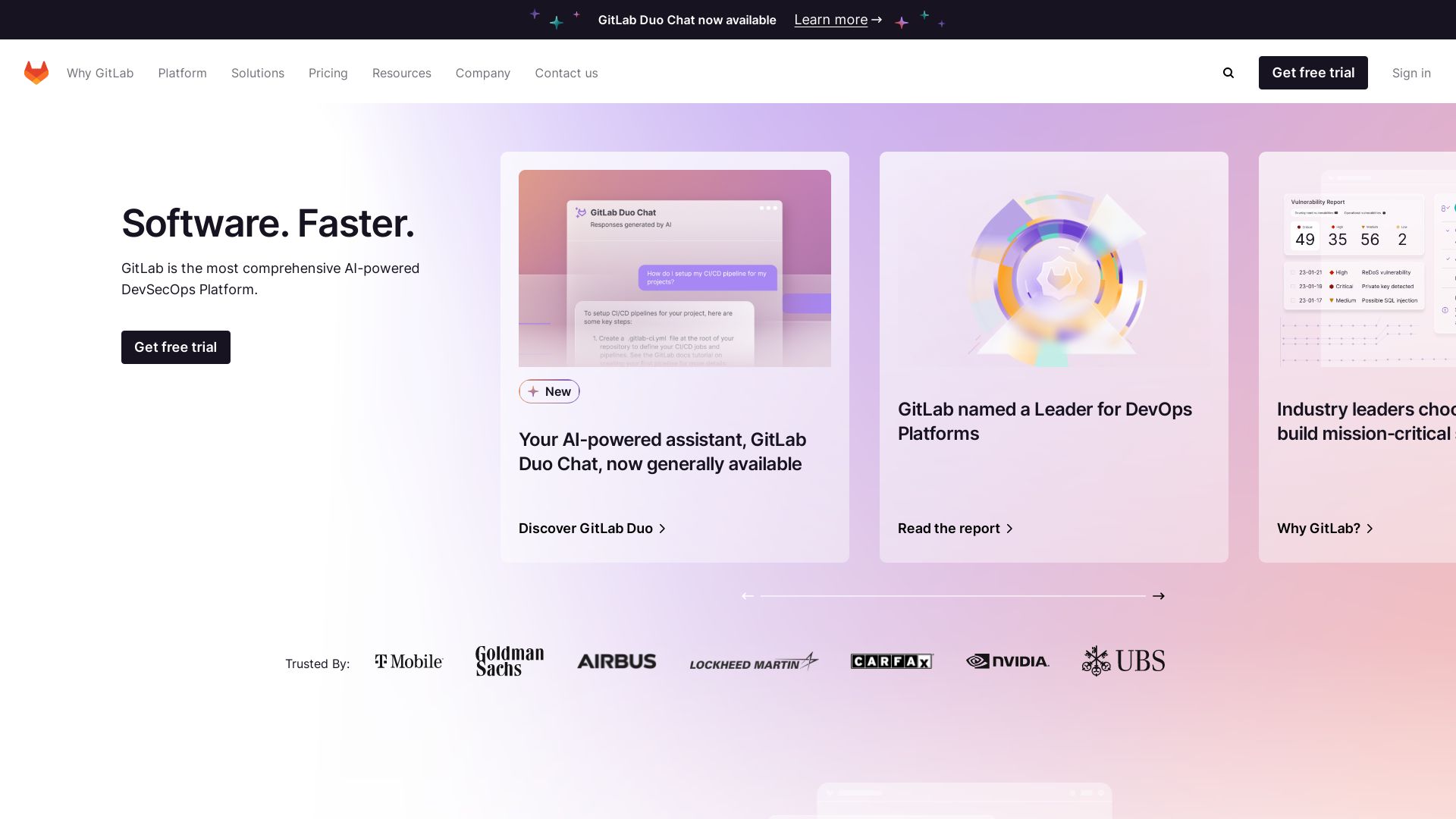
Introducing OpenComposite, an OpenXR implementation facilitates uncomplicated execution for OpenVR applications. It is renowned for its ingenious design that bypasses SteamVR, rendering superior performance and lesser data consumption.
OpenComposite Top Features
- Efficiently replaces SteamVR for running OpenVR applications.
- Offers major performance boost and resolves stuttering issues prevalent in SteamVR.
- Consumes notably less data than SteamVR.
- Allows running most SteamVR games with its extensive interface execution.
- Flexible with both system-wide and per-game installations, though system-wide is recommended.
- OpenComposite software works separately, yet synergistically with the OpenXR Toolkit.
- Widely compatible with multiple headsets including Oculus, Windows Mixed Reality and HTC.
| Major Features | Description |
| Less data consumption | Utilizes significantly less data than SteamVR, offering economic benefits. |
| Integration with OpenXR Toolkit | Can work harmoniously with OpenXR Toolkit, providing augmented VR experience. |
| Headset Compatibility | Supports numerous headsets, ensuring wide accessibility. |
OpenComposite Limitations
- Does not support controller models rendering, or virtual keyboard functionality.
- Does have limited game compatibility, notwithstanding support for popular games.
- Relies heavily on scripts for code generation, thereby limiting repository size.
OpenComposite Pricing
Being an open source system, OpenComposite is completely free.
OpenComposite Use Cases
Use case 1: Existing OpenVR Applications
Users who possess OpenVR Applications but are seeking an alternative to SteamVR will find OpenComposite exceptionally useful due to its better performance and efficient data management.
Use case 2: VR Gaming Enthusiasts
For gamers, OpenComposite can run numerous SteamVR games, albeit with limited compatibility.
Use case 3: VR hardware users
Users of diverse VR headsets, such as Oculus, Windows Mixed Reality, and HTC can significantly benefit from OpenComposite’s wide compatibility.
Oculus VR
Born out of an ambitious Kickstarter campaign, Oculus VR is a ground-breaking platform that has revolutionized the world of virtual reality. Originally founded by Palmer Luckey, it was eventually acquired and rebranded by Facebook (now Meta) with a vision to create broader experiences beyond the realm of gaming. After its inception, Oculus VR rapidly gained traction through its innovative design and high-performance Rift VR headset, solidifying its place in the VR landscape.
Best Features of Oculus VR
- Meta Quest 2: An innovative and fully immersive VR headset with superb performance.
- Upcoming Meta Quest 3: A testament to Oculus’s continuous innovation in VR technology.
- Legacy of Innovation: From their first Oculus Rift to the later standalone Oculus Go, Oculus has consistently delivered cutting-edge VR experiences.
- Partnership with Samsung: Resulting in the collaborative creation of Gear VR in 2015.
- Broader Experience Vision: Envisaged for applications beyond just gaming, expanding the VR use-case horizon.
- Affordable: High performance, customizable VR experiences without breaking the bank.
| Product | Launch Year |
|---|---|
| Oculus Rift DK1 | 2012 |
| Oculus Go | 2017 |
| Meta Quest 2 | 2020 |
Oculus VR Downsides
- High production costs which led to Meta’s Reality Labs division losses of $13.7B in 2020.
- Intense competition, particularly with Apple’s upcoming Vision Pro mixed-reality headset.
- The end of Oculus brand with rebranding to Meta Platforms in 2021, which may have impact on customer familiarity and loyalty.
Oculus VR Use Cases
For Gaming
Pioneering in the field, Oculus VR provides an immersive and high-performance gaming experience, truly revolutionizing the traditional gaming landscape.
For Social Interactions
With Meta behind Oculus, offering a virtual platform for interactions that transcends physical limitations comes as no surprise. VR meetings, parties, or simple hangouts are made possible.
For Education
Oculus VR facilitates immersive, interactive, and engaging learning experiences, making education more exciting and intuitive.
Windows Mixed Reality
Windows Mixed Reality (MR) is a cutting-edge advancement in the tech space, representing the evolution of computer, human, and environmental interactions. It aims to provide a more user-friendly VR experience, extending beyond the traditional boundary of screens to offer interactive data in our living spaces, friends, and social media through mobile AR capabilities.
Windows Mixed Reality Top Features
- Holographic Devices: Impressive 3D model and real-world holographic representations, taking user experiences to new heights.
- Immersive VR Devices: Inside-out tracking technology broadens the VR experience range, transitioning effortlessly between augmented and virtual realities.
- Compatibility: Distinctive compatibility with most standard laptops and PCs, aiming at mass market appeal.
- Advanced Tracking: Headsets equipped with front-mounted cameras that perceive and incorporate the room, objects into the virtual scene.
- Controller Design: Controllers tracked by the headset, eliminating the need for additional sensors.
| Device Options | Acer, HP, Asus, Dell, Lenovo, Samsung |
| Differentiation Factors | Display, Comfort, Design, Setup Convenience, Performance |
| Evolution | Evolution in HCI – keyboards, mice, touch, ink, voice, skeletal tracking |
Windows Mixed Reality Limitations
- Setup: While Windows Mixed Reality aims for convenience, setup can still be a challenge for those new to VR.
- Hardware Requirements: Compatibility with older PCs and standard laptops may limit the overall VR experience.
- Price: High-end options can be costly, limiting access for budget-conscious consumers.
Windows Mixed Reality Use Cases
Home Entertainment
With its dynamic range in VR experiences, Windows Mixed Reality brings high-quality, immersive leisure activities to the comfort of your home.
Business
The technology’s potential for enhancing collaborative work, such as 3D asset sharing in MR spaces, makes it a valuable tool for businesses.
Social Media
Users can seamlessly engage with their friends and followers through the application of MR elements, like Instagram AR filters.
Oculus Runtime

Welcome to the future folks, a time where not just your games, but even your software APIs change themselves – introducing the Oculus Runtime! Kiss goodbye to the proprietary developer APIs of Oculus, because they’ve moved on to OpenXR, a move that’s as tempting as an unlimited WiFi connection. Say hello to standardized VR/AR application development!
Oculus Runtime Top Features
- The exciting shift from Oculus’ proprietary developer APIs to OpenXR provides a standardized development route. Kind of like turning your spaghetti plate of codes into neatly arranged linguini.
- With OpenXR, we now have full interoperability and support from many VR industry companies. It’s like throwing a party and having everyone show up, even the cool kids.
- All new Oculus apps built with OpenXR post-August 2022, heralding a new age of epic VR experiences. As we say, ‘new year, new me’. Or in this case, ‘new year, new API’.
| Supported By | Expected Full Support |
|---|---|
| Oculus Rift | 2022 |
| Unity’s OpenXR | 2022 |
| Unreal Engine | 2022 (with UE version 5) |
Oculus Runtime Disadvantages
- Although older applications on Oculus SDKs will still work (phew!), new features will only be delivered via OpenXR extensions. Yes, that means your old favorite might miss out on some shiny new features.
- Motion sickness is a common complaint. It’s like being seasick, but without the cool ocean views and the excuse to eat ice cream all day.
Oculus Runtime Pricing
Amazingly, the entry ticket to this ride isn’t pricey at all. Oculus Runtime, my dear friends, is on the house. This party is all inclusive, no cover charge needed!
Oculus Runtime Use Cases
Use case 1: Gaming
The Oculus Rift has been used extensively for gaming. So now, instead of just losing hours to video games, you can lose your whole perception of reality. Plus, Oculus has deemed the Rift a gaming device, but don’t tell the social applications – they think they’re the most popular!
Use case 2: Architecture and Design
It’s not just about fun and games! Oculus Runtime is also a hit among architecture firms. Move over paper blueprints and boring old computer screens – make way for VR visualization and design!
Use case 3: Education
While VR in schools makes me feel like I was born in the wrong decade, Oculus Runtime is indeed an effective educational tool in universities and schools. After all, who needs textbooks when you can literally step into history, rocket into space or even dive into a cell’s nucleus?
Unity XR
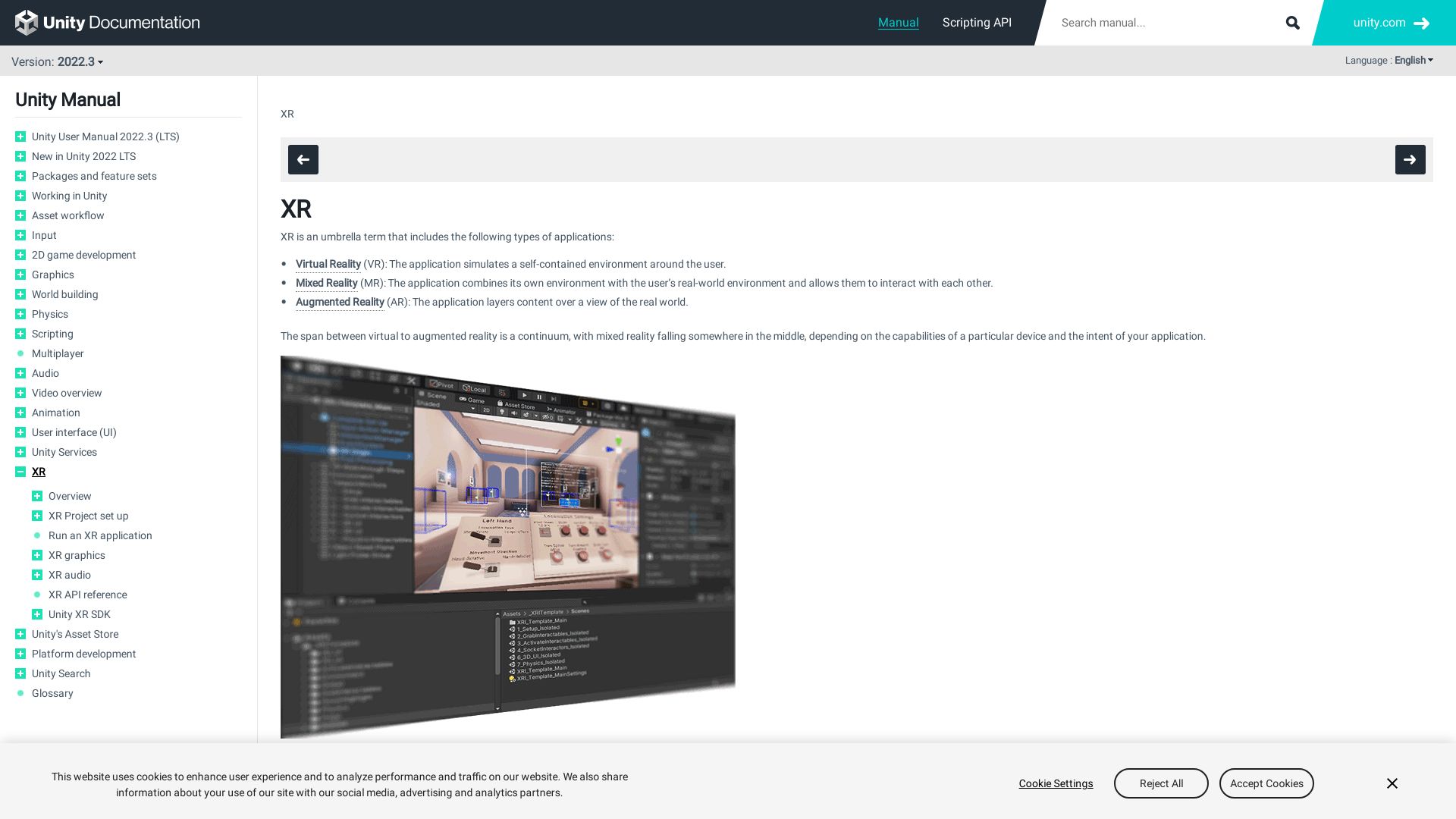
Unity XR, a comprehensive platform catering to Virtual Reality (VR), Mixed Reality (MR), and Augmented Reality (AR), showcases a unified concept of transforming reality into an immersive digital experience.
Unity XR Top Features
- Supports XR game/app development with easy addition of necessary GameObject and components.
- Allows building and running throughout the development phase.
- Follows a sophisticated plug-in framework for cross-platform integration.
- Enables swift creation of XR app using XR Interaction Toolkit (XRIT) with no coding requirement.
- Facilitates comprehensive user interactivity with XR Interaction Toolkit Examples on Github.
| Interactivity | An array of objects, UI interactions, and haptic feedback broadens the scope of engagement. |
| Learning Opportunities | Regular classes and upskilling courses refining XR creation skills from different industry perspectives. |
Unity XR Limitations
- No mention of dedicated support for non-technical users.
- May require the learning curve for non-developers due to its technical nature and terminologies.
- As a comprehensive platform, it may seem complex for novices in VR, AR, and MR development.
Unity XR Use Cases
Use case 1 – XR Game Development
With its support for XR game/app development and customizable GameObject, Unity XR empowers game developers to revolutionize gaming experiences with AR, VR, and MR technology.
Use case 2 – XR Content Creation
Content creators can harness Unity XR’s robust XRIT builds to create immersive content without needing to code, fostering digital creativity across boundaries.
Use case 3 – Upskilling in XR
Educational institutions and skill-based organizations can leverage Unity XR’s courses to train individuals for XR project management, technical feasibility analysis, and developing AR, VR using industry-standard tools.
MRTK
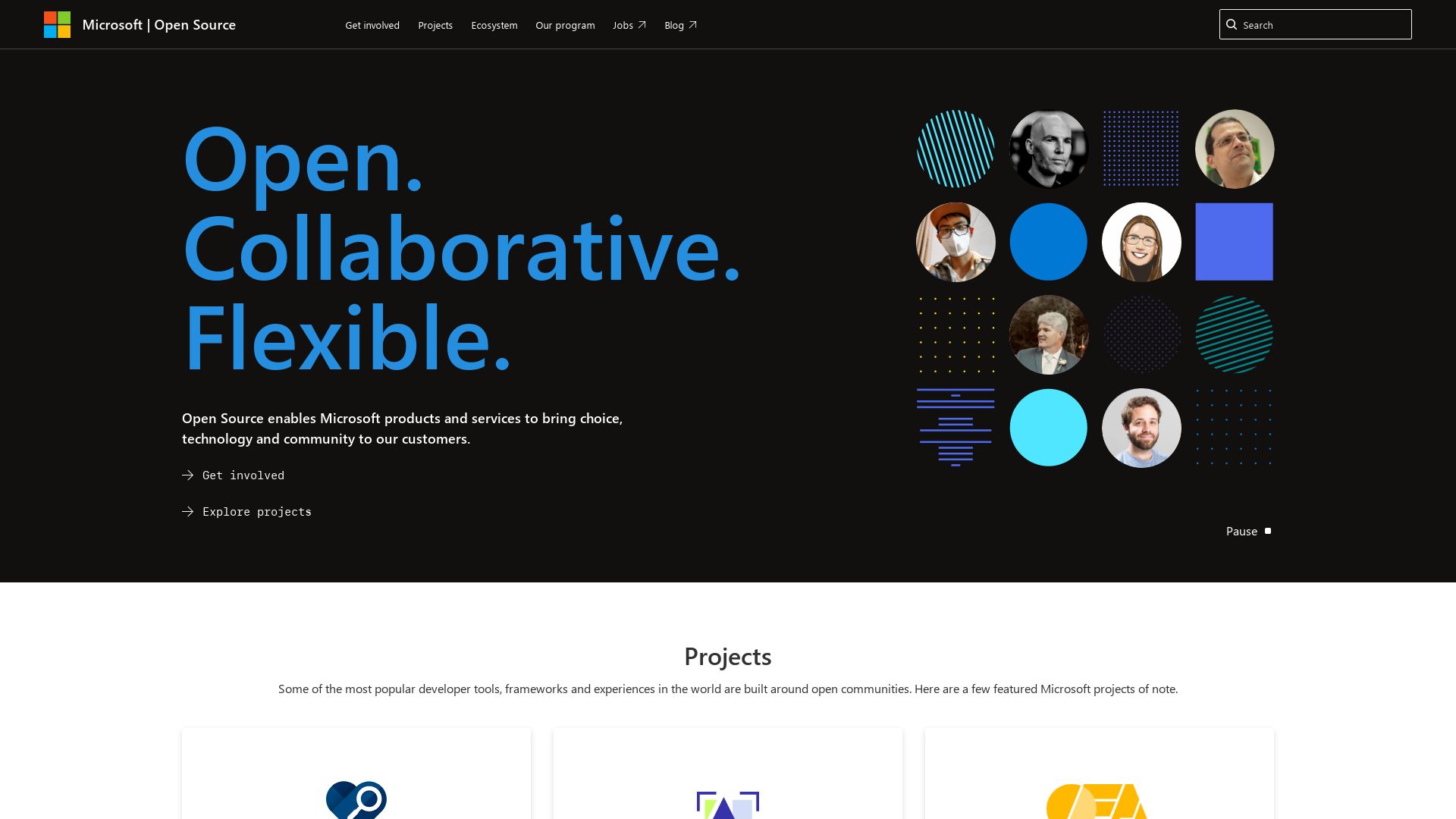
The Mixed Reality Toolkit (MRTK) is a robust, cross-platform development framework birthed by Microsoft. MRTK, expanding its capabilities since its origination in 2016, functions as an ideal solution for creating Mixed Reality (MR), Augmented Reality (AR), and Virtual Reality (VR) software applications.
MRTK Top Features
- Spatial Interaction: Offers building blocks for spatial interactions for a more immersive experience.
- Prototyping: Facilitates rapid prototyping via an in-editor simulation for immediate visibility of changes.
- Extensibility: Operates as an extensible framework, allowing developers to swap out core components.
- Comprehensive Support: Supports a wide array of devices from HoloLens to SteamVR via OpenXR. Interoperates with XR SDK Plugin, Windows XR Plugin, Oculus XR Plugin, and more.
- UX Features: Integrates UX building blocks, scripts, and solvers for elaborate interactions and UI development.
| Additional Device Support | Leap Motion controller for advanced hand tracking |
| Environment Detection | Spatial awareness feature for real-world environments |
| Tutorials | Competent guide for Unity platform development |
MRTK Downsides
- The primary disadvantage of MRTK is the requirement of a learning curve. It might take time for new developers to understand and fully exploit its features.
- MRTK is an open-source project, so while it does have Microsoft’s backing, it relies heavily on the contributions of independent developers around the world. This can sometimes delay troubleshooting and bug fixes.
MRTK Pricing
Empowered by open source, MRTK is made available by Microsoft entirely for free. This means developers can leverage all of its powerful functionalities without facing any pricing constraints.
MRTK Use Cases
Use Case 1 – MR Applications Development
MRTK eases the development of advanced MR applications by providing an extensive suite of utilities, ranging from spatial interactions to reality scanning. The periodic table of elements app and Galaxy Explorer are prime examples of its prowess.
Use Case 2 – Rapid Prototyping
For businesses that aim for quick turnarounds, MRTK flourishes by allowing rapid prototyping via its in-editor simulation. This asset enables immediate visibility of any respective changes.
Use Case 3 – Multi-Scene Management
MRTK proves its worth in managing multiple scenes in mixed reality. It offers a multi-scene manager for proficient handling of scenes, including loading, unloading, and transition effects.
CloudXR
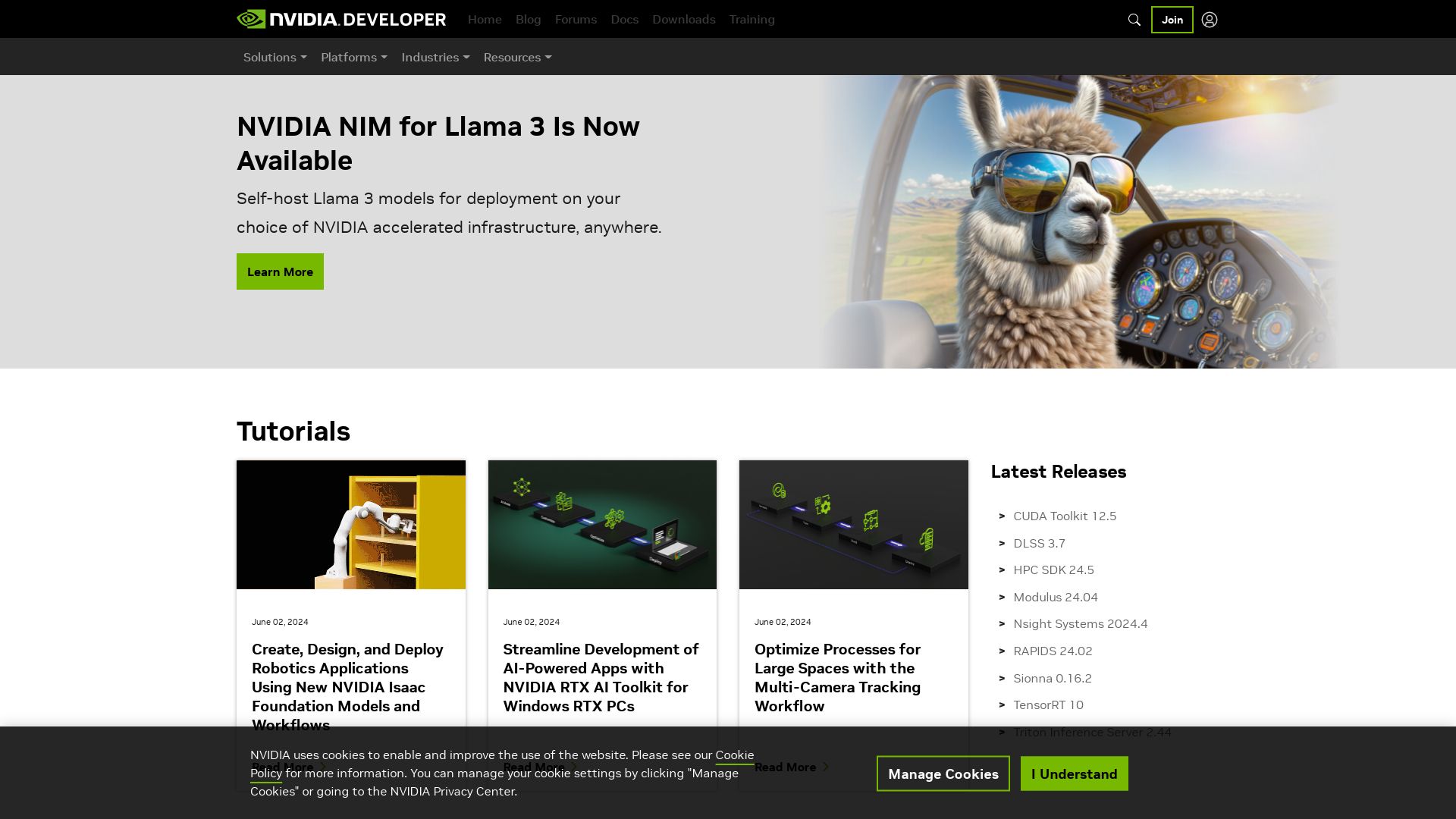
Bringing together the prowess of NVIDIA GPUs and the adaptability of streaming technology, CloudXR marks its presence as a ground-breaking platform within the world of VR/AR. Offering unparalleled possibilities, it streams OpenVR-based applications directly from a remote server to your XR device.
CloudXR Top Features
- Compatiblity with both Microsoft Windows and Android devices, offering flexibility for both desktop and mobile usage.
- Integration capability with SteamVR, rendering the audio-visual content, encoding it, and then streaming it to the client device for decoding and display.
- Support for untethered devices, streaming AR, VR, XR directly from the edge with ultra-low latencies.
- Ability to work on standard network technologies including Ethernet, Wi-Fi, and cellular.
- Strategic partnering with Ericsson to implement low-latency and low-loss scalable throughput for optimized 5G network performance.
| Feature | Utility |
|---|---|
| Comprehensive Suite | CloudXR suite comprises the Essential components, Server Extensions and Client Extensions for diverse utilization. |
| Multi-tenant Deployment | Integration with NVIDIA EGX and NVIDIA RTX software augments the architecture for multi-tenant deployments. |
| Manageability | Compatible with VMware and Red Hat virtualization platforms, simplifying the management process. |
CloudXR Downsides
- CloudXR’s heavy dependence on network quality and stability can become a potential issue within unstable or weak network conditions.
CloudXR Use Cases
Use case 1
CloudXR emerges as a gamechanger for VR headset users like HTC VIVE, HTC VIVE Focus 3, and Oculus Quest 2. It can stream OpenVR-based apps, delivering a seamless VR experience without any tethered restrictions.
Use case 2
AR aficionados with devices such as Samsung Galaxy S20, which operate over a 5G network, can unlock a new dimension of AR experiences with CloudXR’s ability to stream low-latency, high-quality AR applications.
Use case 3
Professionals exploiting the power of VR on platforms like Valve Index can leverage CloudXR for streaming high-fidelity VR content, thanks to the integration of NVIDIA RTX GPUs and NVIDIA RTX Virtual Workstation.
OpenVR
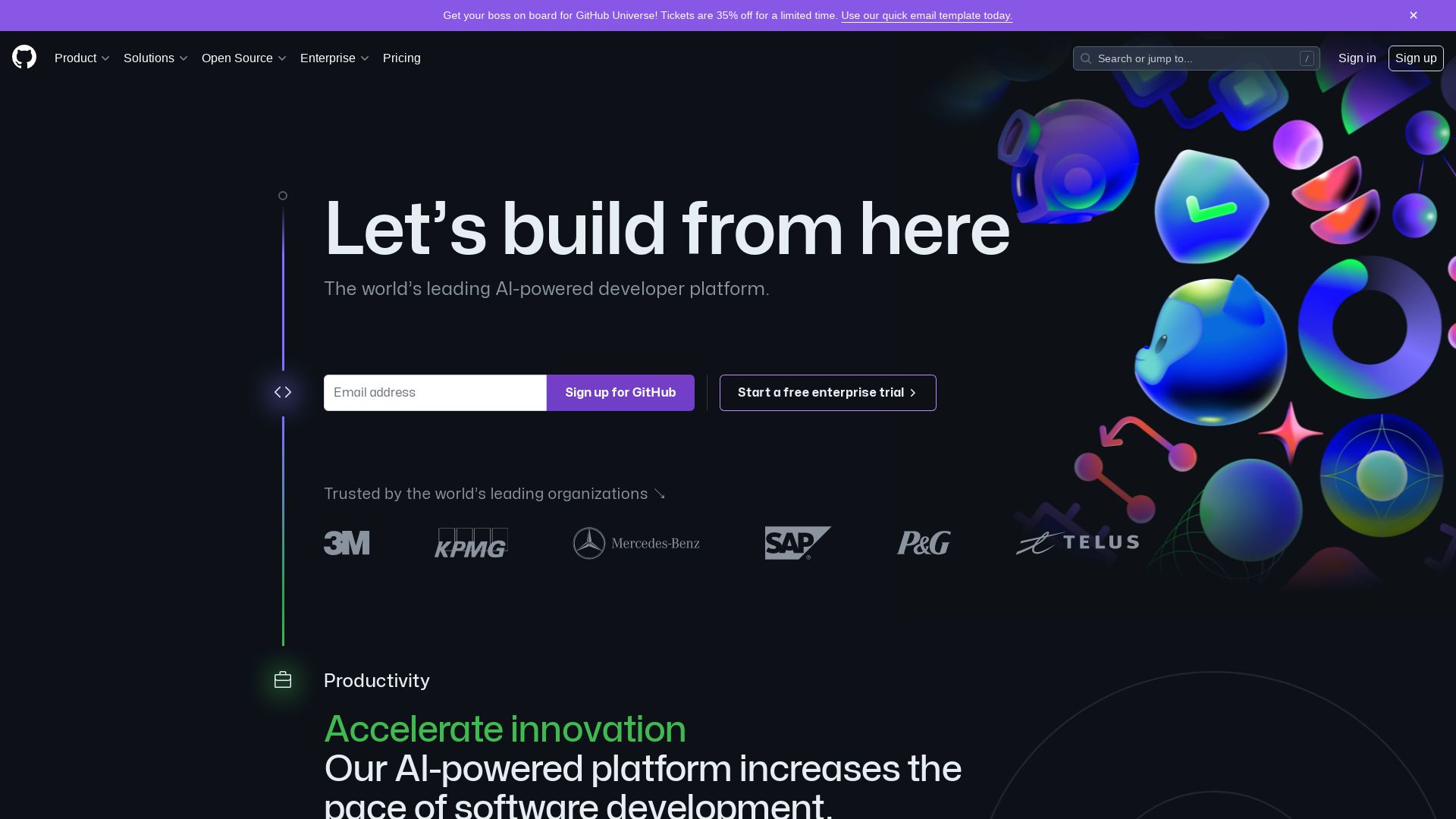
OpenVR, a maverick in the game of Virtual Reality. Pioneered by Valve, this software development kit (SDK) and application programming interface (API) barged onto the scene on 30 April 2015. Not just for the Vanilla types gearing for SteamVR, it’s coded for outreaching compatibility with other virtual reality headset devices.
OpenVR Top Features
- Universal acceptance: Supports HTC Vive Developer Edition including SteamVR controller and Lighthouse.
- Open-source: Whoa! Open to all. Valve ushered in the era of open-source VR projects.
- Applications: Fancy building your own VR Cinderella Castle? Develop your very own SteamVR games and software.
- Unity Support: Plugin and native support for OpenVR SDK in Unity. Now that’s something!
| API | Function |
|---|---|
| IVRChaperone | Records accurate tracking data. |
| IVRSystem:ResetSeatedZeroPose | Resetting tracking like a boss. |
| Init:EVRInitError | Steadies the VR system, solving initiation error. |
OpenVR Disadvantages
- Limited to certain Unity versions: MRTK2 Unity 2018 2.5.0-2.7.0, MRTK2 Unity 2019 2.5.0-2.8.0, MRTK2 Unity 2020 2.5.2-2.6.0.
- Not all enjoyable modes and settings available to all platforms i.e. k_pch_audio_OnRecordDevice_String, k_pch_Camera_EnableCameraForCollisionBounds_Bool, k_pch_Dashboard_EnableWebUI, k_pch_SteamVR_EnableSafeMode, k_pch_TrackingOverride_Section, etc.
OpenVR Pricing
Hold your horses! The sweetest part? It’s Open Source. Yep, you read that right. Costing no more than your audacity to build your VR dreams.
OpenVR Use Cases
Use case 1
If you are a die-hard gaming fanatic with a knack for development, OpenVR is your golden goose. Create unparalleled SteamVR games and software with it.
Use case 2
For creators stepping into the realm of VR technology, go for OpenVR. Its open-source nature gives you the freedom to innovate.
Use case 3
If you’re an entrepreneur envisaging the next big thing in VR, leverage OpenVR. Its support for the HTC Vive Developer Edition is a powerhouse for developing advanced VR applications.
Grant Sullivan
Content writer @ Aircada and self proclaimed board game strategist by day, AI developer by night.




